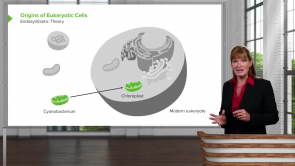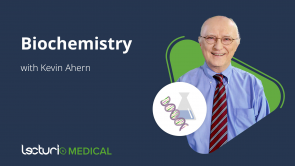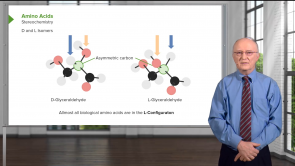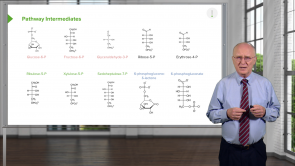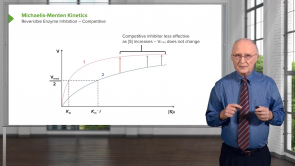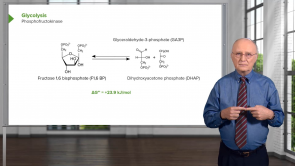Glycolysis: 3-PG –> 2-PG – Glycolysis and Pyruvate Metabolism

About the Lecture
The lecture Glycolysis: 3-PG –> 2-PG – Glycolysis and Pyruvate Metabolism by Kevin Ahern, PhD is from the course Carbohydrate Metabolism.
Included Quiz Questions
Which of the following is true of 2,3-bisphosphoglycerate (2,3 BPG)?
- It can be produced from 1,3-BPG and 3-phosphoglycerate.
- It is a glycolysis endproduct.
- It binds to myoglobin.
- It favors uptake of oxygen by oxygen-binding proteins.
Which of the following is true of phospoenolpyruvate (PEP)?
- It is a very high-energy compound.
- It is made from 2-phosphoglycerate by addition of water.
- It is a stimulator of aldolase.
- It requires ATP to be produced.
Which of the following statements about pyruvate kinase is NOT true?
- The reaction it catalyzes is readily reversible.
- It is both the last enzyme of glycolysis and a regulated enzyme of glycolysis.
- It catalyzes a substrate-level phosphorylation.
- The reaction it catalyzes releases a large amount of energy.
Which of the following molecules participates in the release of oxygen from hemoglobin at the tissue or metabolically active cell sites?
- 2,3-bisphosphoglycerate
- 1,3-bisphosphoglycerate
- 2-phosphoglycerate
- 3-phosphoglycerate
- Phosphoenolpyruvate
These courses may be of interest to you
Customer reviews
5,0 of 5 stars
| 5 Stars |
|
1 |
| 4 Stars |
|
0 |
| 3 Stars |
|
0 |
| 2 Stars |
|
0 |
| 1 Star |
|
0 |
Dr. Ahern pointed out very interesting aspects like heat generation/high energy of PEP and the 2,3-BPG production. Maybe I wasn't paying attention the first time I learned about glycolysis, but this extra integrative information it makes this step easier to remember. Actually, in generally, these human focused biochemistry lectures, are easier to digest, since when I learned it originally, it was mixed with plant and microbial biochem.

